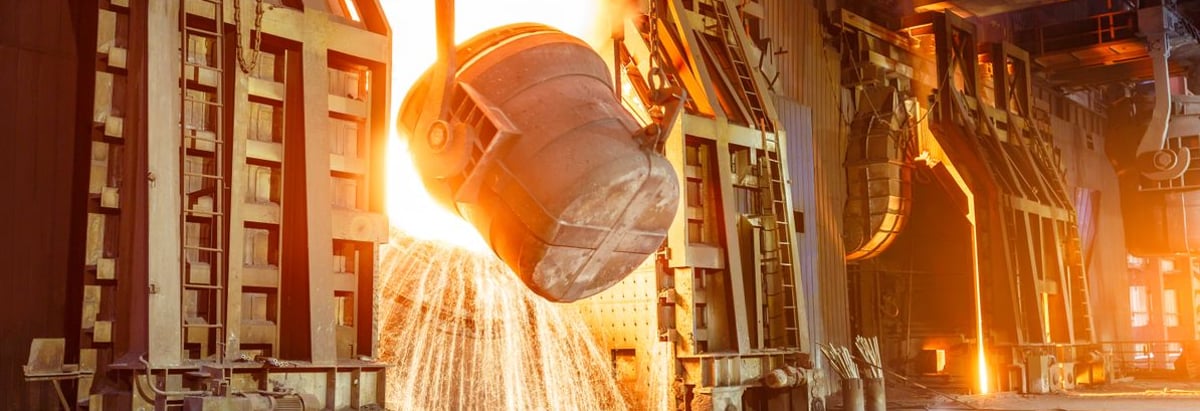- India
- /
- Metals and Mining
- /
- NSEI:KSL
Returns On Capital At Kalyani Steels (NSE:KSL) Paint An Interesting Picture

To find a multi-bagger stock, what are the underlying trends we should look for in a business? Amongst other things, we'll want to see two things; firstly, a growing return on capital employed (ROCE) and secondly, an expansion in the company's amount of capital employed. Ultimately, this demonstrates that it's a business that is reinvesting profits at increasing rates of return. However, after briefly looking over the numbers, we don't think Kalyani Steels (NSE:KSL) has the makings of a multi-bagger going forward, but let's have a look at why that may be.
Return On Capital Employed (ROCE): What is it?
Just to clarify if you're unsure, ROCE is a metric for evaluating how much pre-tax income (in percentage terms) a company earns on the capital invested in its business. The formula for this calculation on Kalyani Steels is:
Return on Capital Employed = Earnings Before Interest and Tax (EBIT) ÷ (Total Assets - Current Liabilities)
0.13 = ₹1.3b ÷ (₹15b - ₹3.9b) (Based on the trailing twelve months to September 2020).
Thus, Kalyani Steels has an ROCE of 13%. In absolute terms, that's a satisfactory return, but compared to the Metals and Mining industry average of 9.7% it's much better.
Check out our latest analysis for Kalyani Steels

While the past is not representative of the future, it can be helpful to know how a company has performed historically, which is why we have this chart above. If you want to delve into the historical earnings, revenue and cash flow of Kalyani Steels, check out these free graphs here.
What Does the ROCE Trend For Kalyani Steels Tell Us?
On the surface, the trend of ROCE at Kalyani Steels doesn't inspire confidence. Over the last five years, returns on capital have decreased to 13% from 22% five years ago. Given the business is employing more capital while revenue has slipped, this is a bit concerning. This could mean that the business is losing its competitive advantage or market share, because while more money is being put into ventures, it's actually producing a lower return - "less bang for their buck" per se.
On a side note, Kalyani Steels has done well to pay down its current liabilities to 27% of total assets. So we could link some of this to the decrease in ROCE. What's more, this can reduce some aspects of risk to the business because now the company's suppliers or short-term creditors are funding less of its operations. Some would claim this reduces the business' efficiency at generating ROCE since it is now funding more of the operations with its own money.In Conclusion...
From the above analysis, we find it rather worrisome that returns on capital and sales for Kalyani Steels have fallen, meanwhile the business is employing more capital than it was five years ago. However the stock has delivered a 62% return to shareholders over the last five years, so investors might be expecting the trends to turn around. In any case, the current underlying trends don't bode well for long term performance so unless they reverse, we'd start looking elsewhere.
If you want to continue researching Kalyani Steels, you might be interested to know about the 1 warning sign that our analysis has discovered.
While Kalyani Steels isn't earning the highest return, check out this free list of companies that are earning high returns on equity with solid balance sheets.
If you decide to trade Kalyani Steels, use the lowest-cost* platform that is rated #1 Overall by Barron’s, Interactive Brokers. Trade stocks, options, futures, forex, bonds and funds on 135 markets, all from a single integrated account. Promoted
Valuation is complex, but we're here to simplify it.
Discover if Kalyani Steels might be undervalued or overvalued with our detailed analysis, featuring fair value estimates, potential risks, dividends, insider trades, and its financial condition.
Access Free AnalysisThis article by Simply Wall St is general in nature. It does not constitute a recommendation to buy or sell any stock, and does not take account of your objectives, or your financial situation. We aim to bring you long-term focused analysis driven by fundamental data. Note that our analysis may not factor in the latest price-sensitive company announcements or qualitative material. Simply Wall St has no position in any stocks mentioned.
*Interactive Brokers Rated Lowest Cost Broker by StockBrokers.com Annual Online Review 2020
Have feedback on this article? Concerned about the content? Get in touch with us directly. Alternatively, email editorial-team@simplywallst.com.
About NSEI:KSL
Excellent balance sheet, good value and pays a dividend.
Similar Companies
Market Insights
Community Narratives



